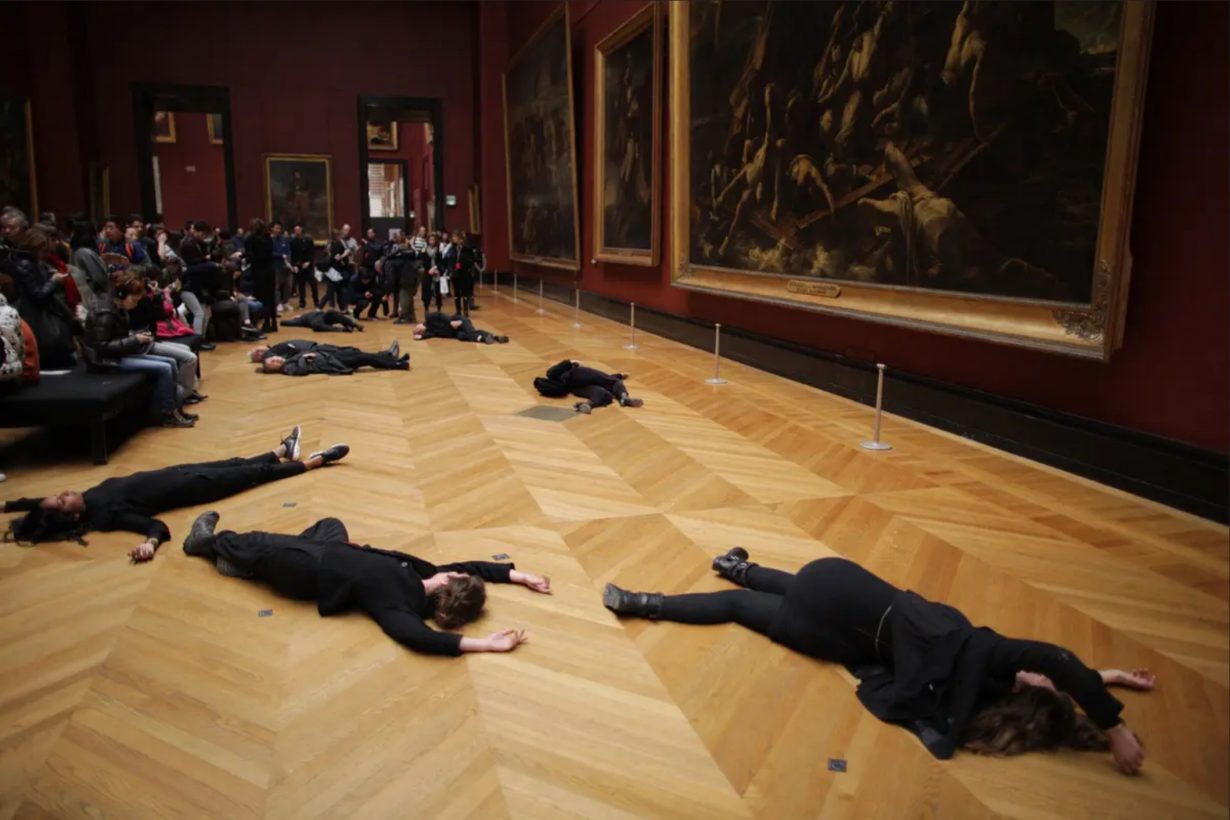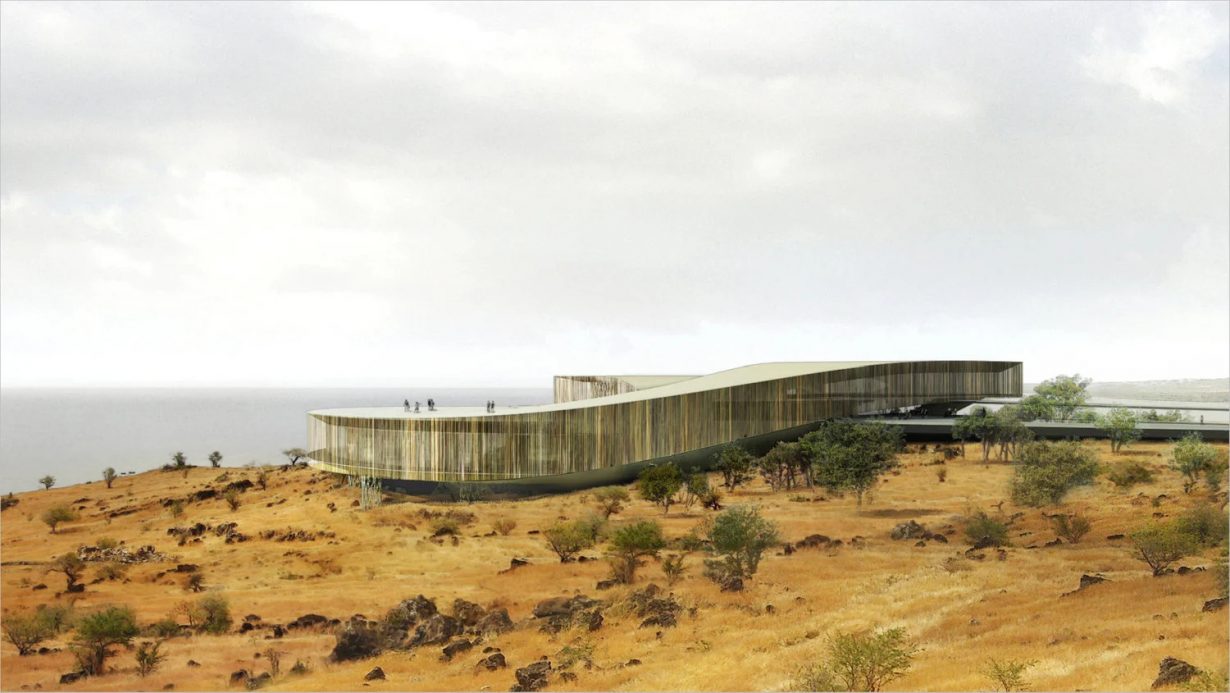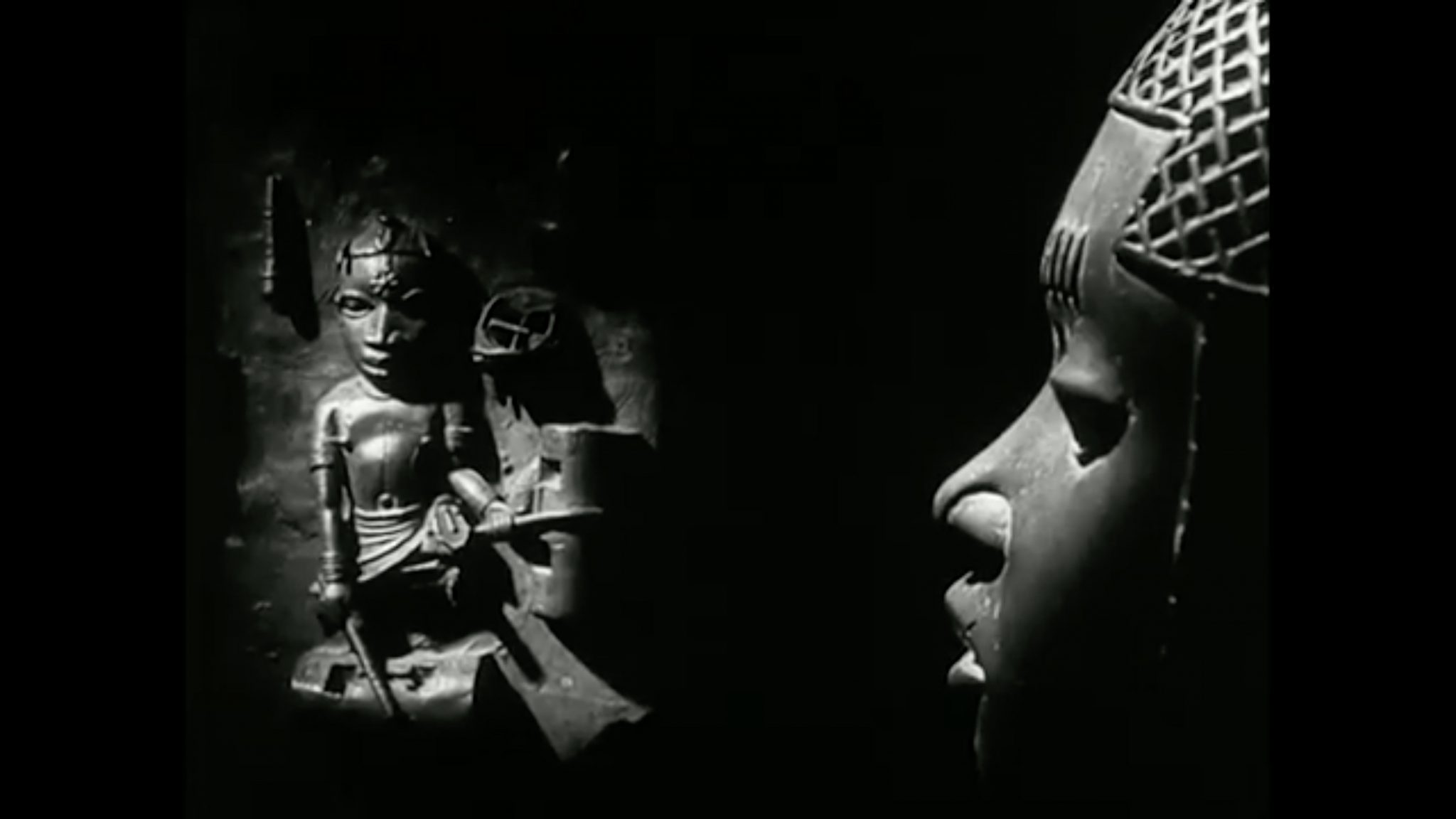How to decolonise the Western museum model? Françoise Vergès advocates disordering, decentring and dispersing it
Born in Paris, the political scientist and historian Françoise Vergès grew up in Réunion (an island in the Indian Ocean that remains French territory) and Algeria. She is the daughter of anticolonial politicians: her father founded the Communist Party of Réunion and her mother established the Union of Women of Réunion. Following the novelist and playwright Maryse Condé as Chair of France’s National Committee for the Memory and History of Slavery from 2008 to 2012, Vergès was also previously a curator of one of the largest slave trade memorials in the world: the Memorial to the Abolition of Slavery in Nantes, France. Her 2019 book A Decolonial Feminism encapsulates her lifelong interest in antiracist and feminist global histories, using this intersectional position to assess contemporary issues including the #MeToo movement and hijab bans in France. She published A Feminist Theory of Violence in 2022, inviting us to look beyond feminisms that push for punitive state responses to violence against women, exploring what safety and security on antiracist feminist terms could look like instead. Now, in A Programme of Absolute Disorder: Decolonizing the Museum (2024), Vergès turns her radical line of questioning towards the museum. She highlights the ways in which the Western museum attempts to obscure or erase from public view its own founding pillars of extermination, wealth extraction and privatisation. For Vergès, this kind of museum cannot be decolonised. It must be disordered – pulled apart in every sense, from its management hierarchy to the myths it tells itself about neutral custodianship. Only then, she argues, can we foster ways of understanding the human and nonhuman world that are no longer premised upon domination.

Sarah Jilani There is one approach that suggests the museum can be reformed, and its structure only needs to be tweaked: with racially diverse management, and museum labels with more historical context. Is A Programme of Absolute Disorder suggesting that the museum has deeper issues? That it’s about more than merely recognising those who were/are excluded from the museum?
Françoise Vergès Years ago, I organised a series of talks titled ‘Forgotten Chapters of French History’, which was about moments that were marginalised, forgotten or considered unimportant. By calling them ‘forgotten chapters’, I was implying that if they were no longer forgotten – if these chapters entered French history – it would be OK. But then neither the narrative framing, nor the way history is written, would be changed, and the forces that had justified systemic violence, exploitation and dispossession would remain unchallenged. Instead, should we not sometimes keep narratives away from the greedy gaze of the West, whose voracity had been proven so many times? Resist entering the world of bourgeois respectability, trying to find ‘our’ Mozart, Kant or de Beauvoir, so as to fit into this way of writing history? Recognition is a double-edged sword. We need it, we must fight for it, but we must be wary of it. When people in power understand that a certain form of inclusion does not threaten them, they are ready for it. So we must acknowledge that recognition is not the end of the fight. If a museum recognises those who were/are excluded, it will be an act of justice. But it is not decolonisation, because the institution itself was built on their dehumanisation, and everything they held dear or sacred – masks, toys, statues, signs of power or of the mundane – entered its halls on the condition that they become dead.
SJ ‘Preservation’ often crops up in these debates – that the Western museum, however flawed, conserves objects for posterity. What are your views on this?
FV As conservation requires the injection of pesticides, insecticides and other chemicals into objects, textiles, stuffed animals and furniture, they become toxic. When we enter a museum we enter a toxic space. We must question the ideology of ‘conservation’: preserving for whom, for what, how and where? Many cultures consider that objects have a finite lifespan, like humans and animals, and that conservation is about how to save seeds, knowledge or techniques. The museum espouses a different idea of conservation that is linked to private property and capital. Sure, destroying and looting art belongs to all wars and conquest, not just those waged by the West. But what distinguishes art-looting in colonial and imperialist wars was that, quite often, conservation followed extermination. While colonial Europeans were certainly not the first to exterminate a species or a people, they were the first to invest a lot of time and energy in preserving a trace of what they had exterminated. That trace found its way into the zoo, or the museum of art or natural history: an example is the skulls of victims of genocide (African Herero women in German colonial concentration camps were forced to scrape the flesh off the skulls of their loved ones with pieces of glass, so that the skulls could be sent to museums – several are at the American Museum of Natural History in New York). At the beginning of the 1953 film Statues Also Die, commissioned by Senegalese intellectual Alioune Diop, and directed by Ghislain Cloquet, Chris Marker and Alain Resnais, a voiceover says: “When men die, they enter history. When statues die, they enter art. This botany of death is what we call culture.” The museum enacts a ‘botany of death’, indeed. That goddess will never again be offered flowers, that mask will never again be worn, that toy will never again be used in a game, that cup will never again hold food.
SJ Representation remains a tricky buzzword in discussions around museums – how can we engage with the question of representation without turning it into the desire to be recognised by the master, as Frantz Fanon phrased it?
FV We must understand why this desire continues, despite the betrayals of the master. Why is the recognition of those who are not themselves among the recognised not enough? Psychoanalysis can help us here; many among the enslaved and the colonised sought to understand how that trap works and affects the psyche. They turned to poetry, literature, manifestos, political organisations, to describe both the destructive element of endlessly searching for this recognition, and ways to be free. Representation is a vast field that is not only visual. People continue to get together to imagine alternative representations through music, dance, theatre, painting, performance and weaving, despite commodification and expropriation. Joy cannot be privatised.

SJ A key point you make in A Programme of Absolute Disorder is that museums are not neutral spaces. In terms of how these institutions are funded, wealthy individuals do, and always have, wielded the power to make museums captive to their patronage. How does private funding stall attempts at transforming the museum?
FV We too often forget to do a critical political-economy analysis of the museum: where does the money come from? How much capital does the museum possess within its collections? Who is making the financial decisions? Who cleans, who cooks, who guards, how much are they paid and why is their work often subcontracted? Nowadays, one proves her/his humanism by being a patron of the arts, showcasing their love of beauty so as to disprove any accusations of indifference towards the plight of others. The conditions of acquiring billions of dollars, through exploitation, extraction and participation in an unfair banking and taxation system, is made invisible. Private capital pressures museums, asking them to cancel a show or to curate one. For example, private capital has helped weaponise antisemitism against pro-Palestinian artists. Private capital can also consign to death heritage that it deems superfluous. Since the start of the Russian invasion, for example, museums in Ukraine have benefitted from the implementation of urgent repair, protection and digitisation measures. The International Council of Museums (iCoM) had a quick response to the open letter signed by the director of every major museum in Israel after the attack of October 7, 2023, with iCoM refusing the directors’ calls to condemn Hamas. But iCoM’s condemnation has been moderate at best of the systemic destruction of Palestinian heritage. As of February 24, 2024, according to the Palestinian culture ministry, 207 archaeological sites and buildings of cultural and historical significance out of a total of 320 in Gaza had been reduced to rubble or severely damaged. These include mosques, churches, cemeteries, museums, libraries and archives.
SJ Although the museum – in the world of today – can only be decolonised in the process of remaking the world that sustains it. Tell me more about the kinds of work we can nevertheless do now. You evocatively call these ‘rehearsals for living’.
FV I must say that I like to visit museums. When I’m somewhere new, I look for museums: not only the big ones but also the quirky ones, the ones that are neglected because they no longer serve how the city or the nation-state want to present themselves. I have seen many spaces that seek to expand the imagination, to preserve joy and life. What they share, I would say, is collective thinking. Every idea is examined: how will it work? What is needed? How to keep the cost as low as possible? How to sustain the energy, the joy in a world led by people who do not want people to have joy within the contours of spaces built for consumption?
SJ Under pressure, several museums have presented themselves as having settled the colonial past. They talk of progress despite the persistence of racism within their ranks and oil or arms sponsorships, arguing that focusing on ‘the negative’ delays repair. How, in contrast, do you understand ‘repair’?
FV The discourse against being ‘negative’ is a way to maintain power over the terms of the debate. It neutralises legitimate anger, and calls justified rage hysterical. We are told we should be reasonable and adopt a better tone of voice. But demanding repair takes courage, fortitude and patience. All this is nourished by justified anger and a sadness that asks: what made this cruelty possible? How can they not see us as humans? How do they sleep at night? Why don’t they hear my anger? Should I shout? Should I use force? Power likes to turn mourning into grandiose spectacle while denying the excluded their rightful anguish and rightful anger. That said, we also have to be able to ask: what is irreparable? What must be forgotten – not to repress feelings, but to let them go? What can be repaired? I understand repair as a process through which every aspect of reparation is examined, where decisions may not be fully satisfactory but they allow for a new history to happen. Yes, banks, insurance companies, industries and families that have built their wealth upon devastation, crime and extraction must pay. But repair will happen because the wretched of the earth fight back; it will not come from those who are producing an uninhabitable world.
SJ You write that you eventually came around to Cameroonian historian Achille Mbembe’s assertion that, ‘If [the enslaved] enter the museum, they will lose the energy required for the complete abolition of racism and exploitation’. How do museums ‘operate a new capture’, in your words, to that end?
FV Many within the museum sector now realise that they can turn contestations against the museum into opportunities for expansion and profit. Sure, Western art, whatever that means, still offers endless avenues for exhibitions, but postcolonial theory, queer theory, feminism and decolonial discourse have provided new fields of extraction. This can make for decades of curatorial work; it offers an opportunity to ‘discover’. Here, I use ‘discover’ as it was understood during colonisation: it is the coloniser ‘discovering’ people, plants, animals, rivers, seas and oceans they had not known before, that no one who mattered to the colonial power had explored, named or studied. Social, political and cultural movements of the twentieth and twenty-first century similarly offer vast fields for the extraction of images, sounds and ideas. This has had some positive effects: we get to see documents, films and archives that were hidden in personal or public collections. Works by marginalised artists become available for viewing. It is often exciting: I know because I always try to see these shows. But should we not ask who profits here? What academic or curatorial careers are being made upon these ‘discoveries’? Do the artists benefit? Does it transform the way art schools teach?

SJ Here in the UK we have just seen a wave of violence on the streets against migrants, refugees and indeed any Britons who are visibly nonwhite. The mobilisations against these were effective, and the British media was quick to shift its tune from xenophobia to ‘strength in diversity’. I think this is an example of ‘multiculturalism as a pacification tool’, in your astute phrase. What frameworks for thinking about difference have you come across?
FV I received my education from my anticolonial feminist and communist parents, and from the anticolonial people of Réunion Island. I saw how creolisation from below was instrumentalised when power understood that neither white supremacy nor constant repression – censorship, arrest, murder – were efficiently maintaining order. Something had to give. It happened in the 1980s, when the socialists were in power. The island could be presented as an example of republican success: Islam, Christianity, Hinduism and Buddhism peacefully coexisted thanks to the state’s benevolent secularism. Racism, they said, had been overcome. How could structural racism exist in a republic where the old class of feudal white landowners was a remnant of the past? That state-sponsored narrative not only rendered invisible ongoing structural racism, but also sought to erase local anticolonialisms that had found expression in a communism from below – by replacing it with multiculturalism. The ideas, cultural practices and radical hopes of anticolonial movements were subsumed by identity politics.
Being Réunionese no longer meant solidarity with the oppressed of the world, or with anti-imperialism or anticapitalism. Instead, the discourse of l’île de tous les métissages (the island of all mixing) became hegemonic, and the creolisation processes that the people of Réunion had put into practice through resistance to colonialism were transformed into an empty signifier. Any challenge to that vacuous discourse was met with indignation, and even accusations of racism. I do not underestimate the appeal of what was on offer: remaining under French dependency with acknowledgement of your difference; enjoying all the benefits of being French, such as a European passport. Yet pacification has its discontents. Multiculturalism alone does not stop the destruction of the planet by a bunch of billionaires, authoritarian leaders or fascist movements. This was visible in the UK, where media were quick to say that the racist violence was ‘not British’, and Keir Starmer prioritised heavy sentencing and imprisonment. In other words, this violence was seen as mere criminality, to be dealt with by the law. But what has fed this?Years of leniency towards the far right, and those fuelling antimigrant hatred. What is needed is antiracist antifascism, not vacuous multiculturalism.
SJ You describe in the book how you had to resist a proposal for the Maison des Civilisations et de l’Unité Réunionnaise project – as a planned cultural centre for Réunion – as the plan sought to impose the structure and museographic model of France’s regional museums. What is at stake in this question of method – or why does ‘how we disorder then reorder things’, as you put it, matter?
FV Capitalism has shown its capacity for colonising the mind. It feeds us aspirations (goods, smartphones, speed, ‘modernity’) and encourages us to ignore the cost of these aspirations. A programme of absolute disorder takes time. Disorder should not be thought of as chaos, but as a process of relinquishing and creating, while saving what needs to be saved. Imagine small, flexible, but very seriously thought-out sites. We could start by asking what its architecture would be like: monumental, impressive or welcoming? How would its space work for all kinds of ages and bodies? Should we whisper? Can there be joy? How can we keep the cost low so that things can be fluid and changing? Imagine no more national museums pushing a political narrative that constantly needs to be revised either to affirm national unity or to include a forgotten group (even though forgetting is part of nationmaking). Imagine not art museums, but sites of custody and care, realised along the needs, desires and wishes of a group.
A Programme of Absolute Disorder: Decolonizing the Museum is out now, published by Pluto Books
Sarah Jilani is a lecturer in postcolonial literatures and world film at City, University of London
